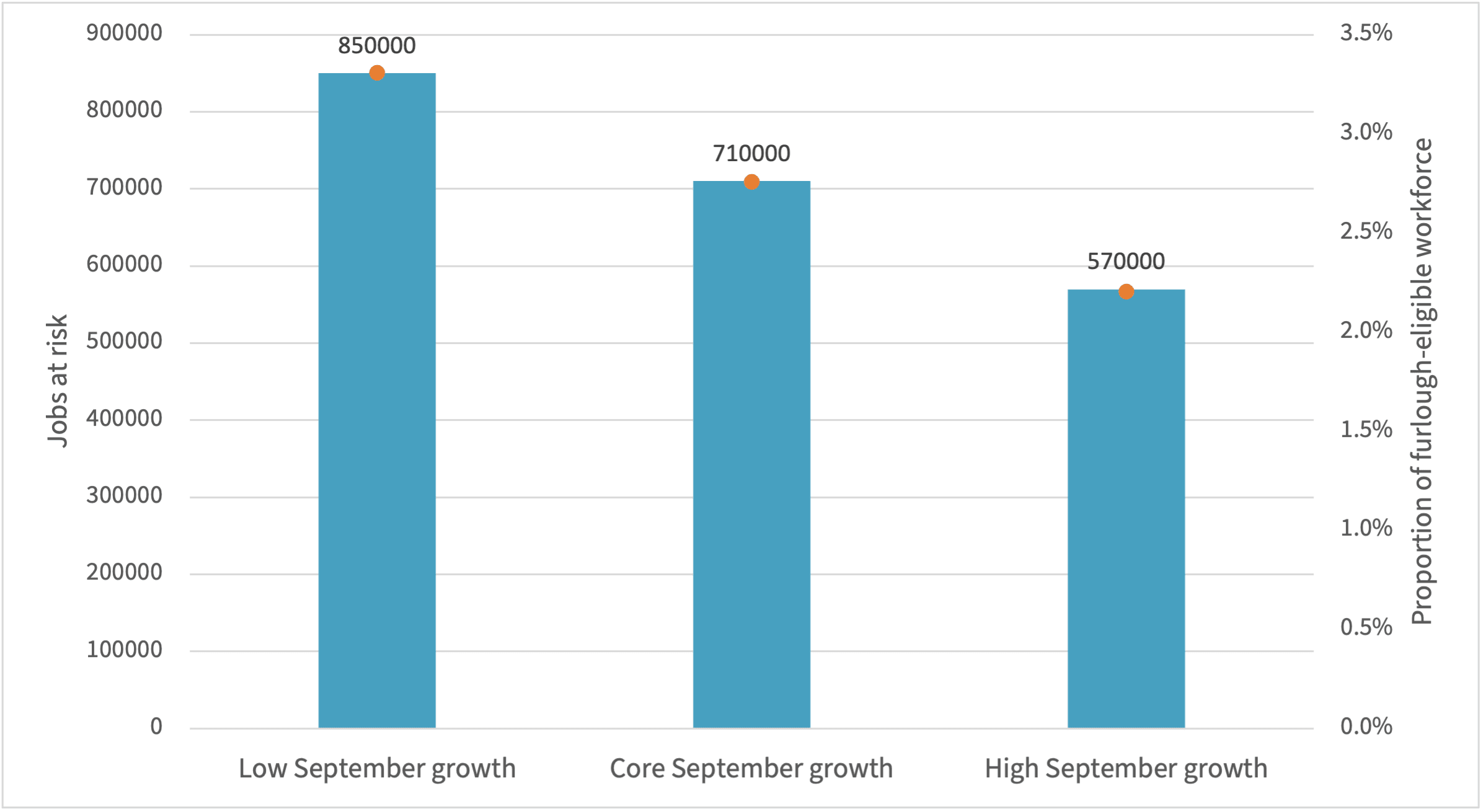Over 700,000 jobs at risk as furlough scheme ends next week
Hundreds of thousands of people are at risk of redundancy, loss of hours or earnings unless the government extends the furlough scheme
23 September 2021
New modelling from the New Economics Foundation (NEF) finds that 710,000 furloughed jobs are at risk as the scheme ends next week. Based on today’s data release from the Office for National Statistics (ONS) on Business insights and impact on the UK economy (BICS), the analysis shows that the UK’s economic recovery from the pandemic is stalling.
Figure 1: The end of the furlough scheme is likely to put 710,000 jobs at risk of redundancy, loss of hours, or loss of pay
NEF model estimates of jobs at risk at the end of September as a result of the winding down and closing of the Coronavirus Job Retention Scheme, derived from analysis of the relationship between GDP, business turnover, and furlough demand and forecast forward using HM Treasury-compiled GDP forecasts adjusted to account for recent indicators of GDP growth

Source: NEF analysis of ONS Business Insights and Impact on the UK Economy (BICS Wave 39), and HM Treasury forecasts for the UK economy
Alex Chapman, Senior Researcher at the New Economics Foundation said:
“This latest government data provides further evidence that the UK’s economic recovery from the pandemic is stalling. Business activity will not have returned to pre-crisis levels by the time the furlough scheme closes next week and as a result we estimate over 700,000 jobs are at risk of redundancy, loss of hours, or loss of pay. With energy bill increases, universal credit cuts, and national insurance rate rises all in the pipeline, workers face a serious shock to their finances which will be worsened by ending furlough without a follow-on scheme.
“Business disruption looks set to continue, and we have a rapidly growing problem with worker skill sets being mismatched against the jobs that are available. The government should evolve the furlough scheme into a new skills support scheme which can continue to protect jobs and incomes, while preparing workers for transitions into new industries.”
Contact
Becky Malone, becky.malone@neweconomics.org, 07925950654
Notes to editors
On the 2nd August 2021 NEF estimated the number of jobs at risk at the close of the furlough scheme at 660,000. We have now updated our modelling to reflect recent evidence suggesting slightly lower rates of GDP growth during Q3 than originally forecast. We have also slightly adjusted our methodology to take a less pessimistic approach to adjusting for the proportion of businesses (around 10% in BICS wave 39) which have currently paused or ceased trading. We now assume that a higher proportion of businesses would report as having paused or ceased trading in ‘normal times’. Our estimate of 710,000 jobs at risk represents our new core forecast.
Our method:
The ONS’ Business Insights Survey (BICS) provides estimates of business turnover and furlough broken down by high level sector. Each data collection wave of the survey spans a two-week period. Business turnover data is presented in intervals ranging from“turnover has increased by 50%” compared to normal expectations for this time of year to“turnover has decreased by over 50%”. From these intervals NEF estimates business turnover by sector as a percentage of the level expected during normal times using the method applied by the ONS at regular intervals throughout the crisis. Once calculated, this figure allows calculation of the proportionate level of furlough demand for a given level of missing turnover (against normal expectations) in a given sector. Having established the relationship between turnover and furlough demand in each sector, NEF applies this assumption to forecasts of future business turnover based on macroeconomic forecasts. Specifically we calculate the level of‘missing turnover’ from UK GDP forecasts collated by HM Treasury. Our lower forecast represents the lower quartile of the Treasury’s forecasts, our core the median, and our upper the upper quartile. These forecasts tell us what proportion of the‘missing’ activity (compared to pre-crisis levels, ie, Q4 2019) is likely to return by the target date of 30 September.
Topics Work & pay Social security






